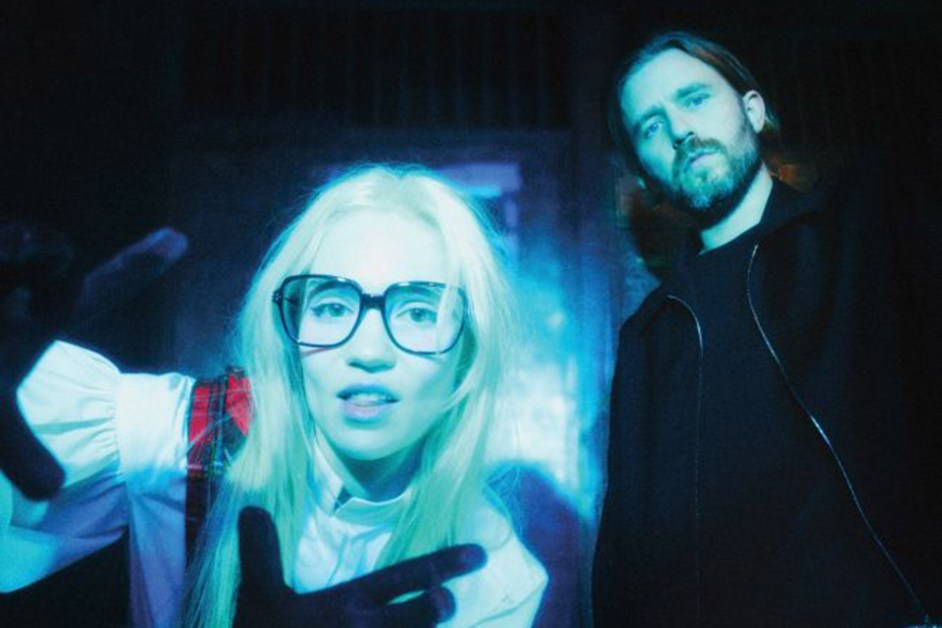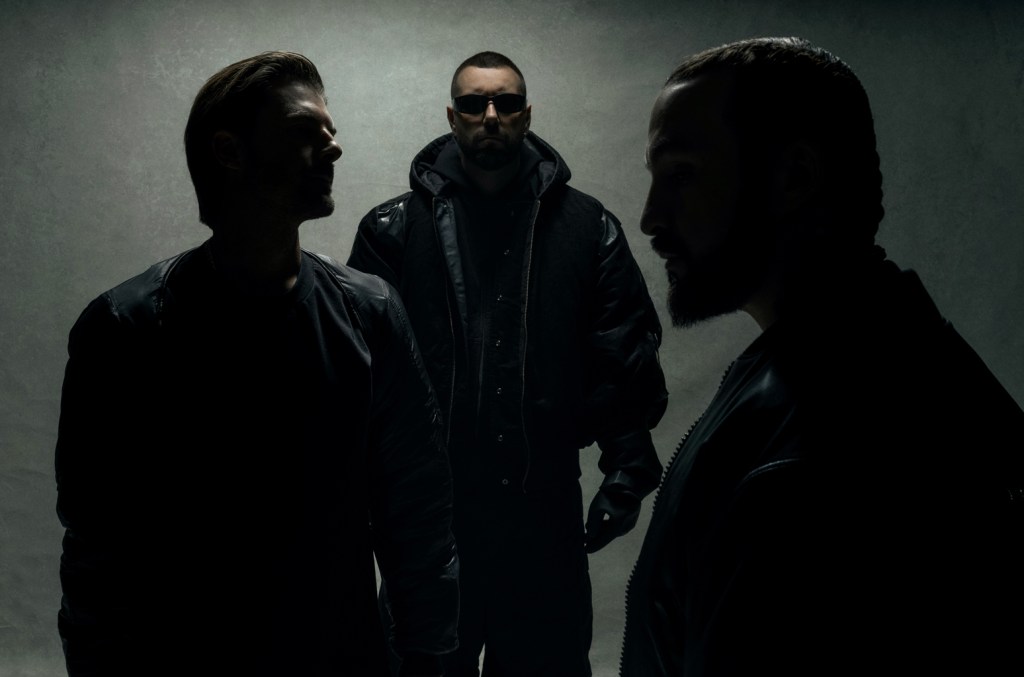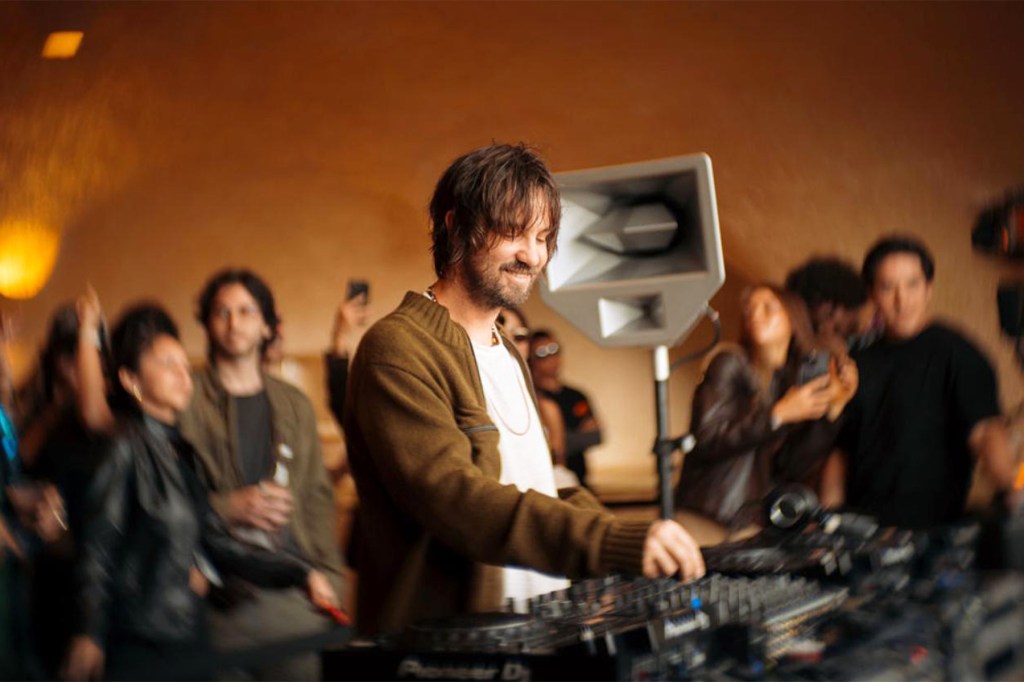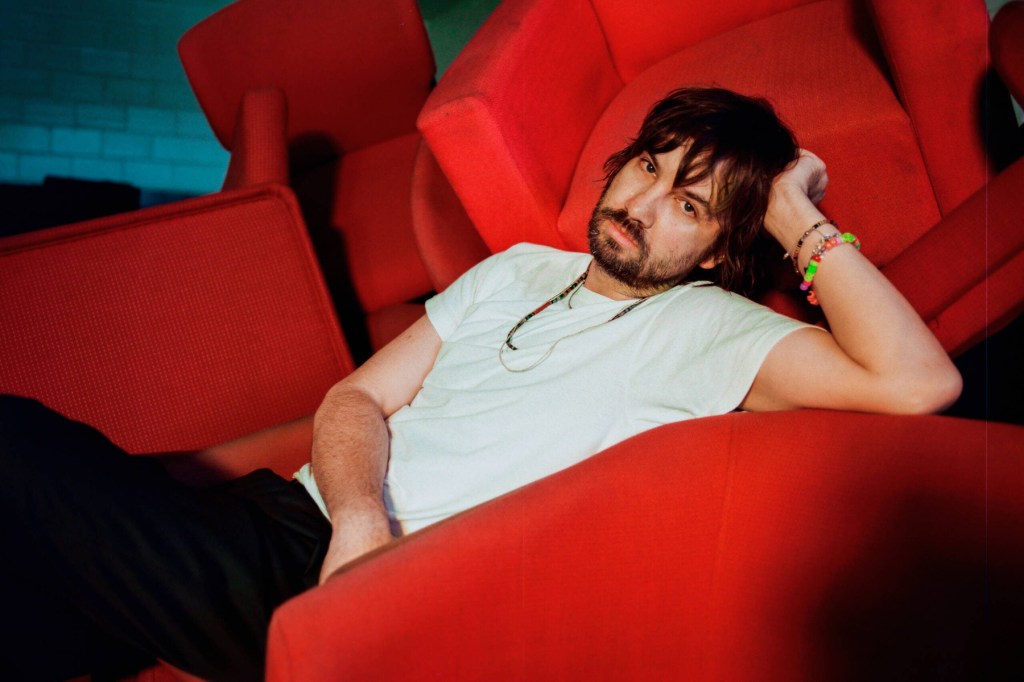genre dance
Page: 5
Simply the best new dance tracks of the week.
10/31/2025

Trending on Billboard
The multi-genre Wicked Oaks festival, which held its first edition in Austin, Texas, on Saturday and Sunday (Oct. 25-26), has released a statement addressing reports that multiple attendees were injured or killed during the event — and offered information on refunds for attendees impacted by the severe weather that forced temporary closures throughout the weekend.
According to festival organizers, there were no fatalities on the festival grounds, though two attendees were transported to hospitals on Saturday, while five were transported to hospitals on Sunday. “[Austin-Travis County] EMS has advised they are not aware of any deaths or critical patients among those transported from the festival,” the festival’s statement reads.
The statement goes on to note that organizers “are also aware of a tragic vehicle accident in the Bastrop area, involving individuals traveling home after the event,” that killed one person, Anthony Pike, after “a truck ran a red light and caused the wreck.”
“Our community is small, and losses like this are felt deeply,” the statement continues. “We are profoundly saddened by this tragedy and extend our heartfelt condolences to Anthony’s family, friends, and all who are affected.”
Wicked Oaks organizers also acknowledged the severe weather that impacted all three days of the festival — including a “severe storm” that struck around 10 p.m. on Saturday, prompting “a site-wide evacuation” and forcing the festival to shut down for the remainder of the evening — and offered refund and reimbursement information for impacted attendees.
The festival says it’s offering a full refund to attendees who held Saturday single-day tickets; a 50% refund to two-day ticket holders; a hotel reimbursement for campers who had to secure alternate lodging on Friday when forecasts of heavy rain and lightning delayed the opening of the festival’s campgrounds; a 50% refund for attendees who paid to park in the festival’s Enchanted Overnight Parking areas, after the festival’s parking lots were deemed “unusable” on Sunday following rainstorms; and a full refund for attendees who paid to ride festival shuttles on Saturday. All qualifying refunds will be issued to the original form of payment.
Festival organizers instruct those requesting a hotel reimbursement to email an itemized receipt to contact@wickedoaksfest.com by midnight on Friday (Oct. 31).
“We are working closely with our multiple ticket providers to finalize the refund timeline,” the festival’s statement continues. “Because many guests purchased through payment plans, the process is more complex and requires coordination across several platforms. We understand the time, money, and planning that goes into a festival weekend. We are committed to resolving this quickly and will update everyone as soon as possible.”
Performers at Wicked Oaks included Martin Garrix, Eric Prydz, Bob Moses, Kaskade, Cloonee and Nightmre.
Trending on Billboard
The Fifth Element Festival has announced the full lineup for its debut edition.
Leading the bill are Detroit icon Carl Craig, enduring favorite Seth Troxler, techno titan Nicole Moudaber, scene pioneer Danny Tanaglia and minimal techno legend Ricardo Villalobos, along with Dixon, DJ Tennis, Dubfire and more. The bill in total features more than 60 artists; see this complete lineup below.
The Fifth Element happens in Puerto Rico on Jan. 7-13. In addition to the music, the fest will also offer yoga, breathwork, sound baths and other “healing ceremonies and workshops.” This focus on wellness is a core focus of The Fifth Element, which was created by Phillip Pulitano, who also co-founded the longstanding BPM Festival. (Pulitano is no longer involved with BPM.)
Speaking to Billboard about The Fifth Element in May, Pulitano said he came up with the idea during an ayahuasca ceremony, an experience that made him want to create a festival that was about more than just partying.
“I knew I needed to figure out a way to create a hybrid experience in dance culture,” Pulitano said. “Not going for a super hippie vibe that plant medicine can be… but doing something that’s in service and creates a bit more awareness and brings more consciousness to what we’re doing.”
As such, The Fifth Element will also host a Sacred Space, a “wellness sanctuary” being curated by the Above & Below Collective, a group of artists, therapists, facilitators, and health care professionals that will host ceremonial gatherings, guided workshops and integration sessions led by reputable facilitators from a variety of healing traditions.
The Fifth Element is offering both seven and three day passes, both of which are available here. Discounted tickets are being offered to residents of Puerto Rico.
The 5th Element Festival
Courtesy of Get In PR
Trending on Billboard New Year’s Eve 2026 just got more interesting with the announcement that both Swedish House Mafia and Skrillex together with Four Tet will play over two-nights in San Francisco on Dec. 30-31. Both shows will happen at San Francisco’s Pier 80, the same site where the festival Portola has happened annually since […]

Trending on Billboard
Since it first roared onto the Billboard charts with 2009’s Guns Don’t Kill People… Lazers Do LP, Major Lazer has established itself as one of the most innovative collectives in mainstream music through its fusion of EDM, dancehall, hip-hop, reggaetón, trap and soca. Now, the group’s three current members — Diplo, Walshy Fire and Ape Drums — have officially added a fourth name to the lineup: America Foster.
A 28-year-old British-Jamaican artist, model and content creator, America Foster hails from the outskirts of London in South Buckinghamshire. As one of seven children in a household dominated by boys, she quickly learned how to lean into her knack for entertaining to ensure her voice was heard. She remembers developing her freestyling as a party trick as young as 10, and around age 15, she started playing around with accents and voice acting, sending friends into laughing fits with prank calls and her imitations of the London Underground voiceover. As she entered the final years of her adolescence and her creative friends started seriously pursuing their dreams, Foster brushed off countless requests to hop in the booth and freestyle over a track.
“I was completely opposed to it,” she recalls. “And then one of my friends [convinced] me to come to their studio session, the producers spun around in their chairs like, ‘Your turn!’ I was like, ‘Not happening!’ That ended up being the first time I ever put my vocals on a studio recording.”
Foster is the first to admit that those early songs weren’t the strongest — “They were very commercial, Chris Brown dance-pop; I call it McDonald’s music” — but she eventually landed on a sound that distilled the authenticity, cultural fluency and bubbly quirk of her off-the-cuff social media content, which garnered her hundreds of thousands of followers pre-Major Lazer and resulted in a Red Rat-informed approach to dancehall toasting and singjaying anchored by her striking charisma.
After a few viral clips caught Diplo’s attention, Foster quickly took advantage of the potential music industry connection. She thanked the Grammy-winning DJ for following her, and the two started exchanging music, culminating in an in-person meeting at his Roundhouse show last September. There, the pair planned a studio session in Jamaica, where Foster met the rest of Major Lazer, and by Paris’ Fête de la Musique in June, she made her live debut with the group. In July, Foster officially announced her addition to Major Lazer via Instagram.
Arriving as the group’s youngest and first woman member, Foster made her official Major Lazer debut with a freestyle remix of August’s “Gangsta,” a shatta-informed track that also features Kybba and Busy Signal. A few weeks later (Oct. 24), Foster joined forces with buzzy Toronto artist Sadboi and Emmy-winning choreographer Parris Goebel for “Bruk Down,” a standout ‘90s dancehall-inspired track that doubles as Goebel’s musical debut. Goebel also co-directed the track’s flashy music video alongside Philippa Price.
“She understands what she’s good at, and she understands that she’s got a market for it. It’s genius to me,” Foster tells Billboard about working with Goebel. “I’ve heard some of her songs that are due to come out, and they are amazing — especially for the dance community.”
In a candid conversation with Billboard, America Foster details her origins, integrating herself into the Major Lazer family, fashioning “Bruk Down” out of a freestyle and what else she’s cooking up with her new groupmates.
What are some of your earliest musical memories?
[They’re] definitely attached to dance. Rhythm and beat [were] my first introduction [to music]; I never really heard lyrics for what they were when I was younger. I’d be able to recite a whole song, but I wouldn’t be able to tell you the content.
Where do you consider home?
Growing up, I lived just on the outskirts of London. But my heart was always in Northwest London; I was always there. That’s where my mum and her sisters were raised, and my gran still lives there. During weekends, half-terms and school holidays, I’d be in London. And then I’d be living in South Buckinghamshire, which is where I was raised.
How did you land on the “America Foster” sound?
Eight years ago, when I first got into the studio, I didn’t understand my sound, so I started trying to develop it. I really captured my sound in the last four years. I made a couple of demos that were getting close, but they weren’t the final sound, which were the demos that I actually sent to Diplo.
You connected with him over Instagram, right?
He came across my page from a viral moment; I’ve had quite a few of those on Instagram from my content creation. I was trying to figure out how to transition into being a respected artist, so I started dropping bits of content surrounded by my music. Whether I’m talking about the weather or my menstruation, I put it in a rhyme pattern and people love it — especially because you don’t expect me to have such a strong Jamaican accent, because I’m light-skinned and from England, and my name’s America. It’s like, “What the f—k is going on?” [Laughs.]
He followed me off a viral freestyle, and I was really excited, because I was seriously making music at the time. I knew that he was behind Major Lazer, and I also know he was behind [M.I.A.’s] “Paper Planes.” I grew up to that song, just banging it out constantly. So, obviously, I shot my shot. I thanked him for the follow and sent about four demos. We started exchanging music on WhatsApp, and he’d send me beats he heard my voice on.
Last September, he came to London, and I met him at the Roundhouse while he was performing. The next day, we went to a football game and planned for a studio session in Jamaica, which is where I met the rest of Major Lazer.
What was that first meeting like?
It was amazing, we just clicked. Me and Walshy were bantering left, right and center; it felt like I had known these guys for ages. It didn’t feel like the first initial meeting at all. I went to Diplo’s home in Jamaica, and it’s quite a showroom home, but it still has this beautiful, homely vibe. I had 32 hours in Jamaica, and we made six songs, one of which was “Bruk Down.”
“Bruk Down” started as a freestyle, right?
Diplo just had the beat running, and we all knew it was f—king hard. He kept it running to see if we came up with anything; he even freestyled a little bit, which was quite funny. And then I just heard, “Bruk out, bruk out, waan fi.” I knew I liked that, but I wanted to repeat it twice, and then change it a bit the third time. Walshy was in the room, and he was like, “Yea, man, dat fyah!” Diplo also liked it, so I continued freestyling and writing at the same time.
It’s crazy how the final version sounds like a completely different song from how it first started. My initial freestyle was shared with Parris Goebel and Sadboi, and when I heard it with their parts, it sounded so good. I was only briefly familiar with Sadboi, and I hadn’t connected the dots about who Parris was. I didn’t know she was making music. I was like, “Oh my God, my music video’s gonna be sick!” [Laughs.]
Did you have any initial reservations about pursuing your music career through a collective as opposed to just going solo from the jump?
About two years before Major Lazer was on the table, I thought about being in a girl group. And I was like…. no. I just couldn’t see that for me. Part of me felt like I had to really weigh it up and see what the exit would look like.
When Major Lazer came into the picture, I was like, “Oh my God, this is the best group that could have ever asked me to join them.” Firstly, it’s all boys. Secondly, they’re not vocalists; they’re producers and DJs, so I’d be the only vocalist, which gives me the opportunity to still be a solo artist.
Being the only woman and the youngest, what made you trust these guys?
My familiarity [with them] through their music. Through being a consumer, I felt like I knew them already. That’s why it felt so family-oriented in the first meeting. I’m big on signs, energy and spirituality, and I just followed my gut.
What does your contract look like?
It’s a featured artist agreement. I’m contracted as the fourth member.
So, you’re technically an unsigned artist?
Yes.
Is America a stage name or your given name?
Birth name. I was orphaned by the age of four, and my mum gave me my name. I look at it as if that was the best and final gift that my mum could have given me. I can’t change it, even though I hated the name when I was younger. I’m the only one out of my siblings with the name of a country or state or continent. I don’t have a middle name.
My mum knew something that no one else knew. She knew what she gave birth to. I can’t put a different name on my stardom. I don’t feel like that would be paying homage to my mum. She would have been a performer if she was still about; she had the essence that I do, but I’ve just been able to live and show it.
What else from your childhood do you see reflected in the music you make today?
My inspirations. When I’m freestyling, I hear Beenie Man, Elephant Man, Vybz Kartel, a little bit of Lady Saw, all of that. I hear their attitude in my freestyles. The sound I’m running with at the moment is Red Rat’s; I’m paying homage to him. I’m tuning in to the things that made me love music in the first place, taking elements of all of that at combining it with who I am to produce something that the world will just say “yes” to.
How do you anticipate your content creation might evolve as your artist career grows?
I’m not creating content; I’m capturing moments. There’s a difference for me. It’ll be exactly the same. I’ll just be capturing bigger moments and things that people will want to see: being on the road with the boys, backstage banter and little humorous exchanges.
Do you feel embraced by Major Lazer’s fanbase?
I’m definitely taking it in. With my social media content, I was becoming a little bit more known in London. A year before [joining] Major Lazer, I went to Barbados, and someone recognized me. That was like one of the first moments that I realized how far my reach is.
Major Lazer’s fan base is great. They’ve taken me in like I’ve been a member since day one. It feels like they have literally said, “Oh, Diplo, you like her, yeah? Walshy? Cool, we like you too.”
Top three Major Lazer songs of all time?
“Pon de Floor,” “Hold the Line” and “Watch Out for This (Bumaye).”
Trending on Billboard On Oct. 10, Tame Impala‘s Kevin Parker and an intimately sized group of fans gathered in Mexico City’s magnificent Parque Quetzalcóatl for a DJ set by Parker. Produced by Cercle, the 90-minute set happened in conjunction with the Oct. 17 release of the new Tame Impala album, Deadbeat, a collection of dance […]
Trending on Billboard Earlier this month Fred again.. kicked off his buzzy 10 shows in 10 weeks in 10 cities run, a peripatetic endeavor happening as part of the release of his USB002 project. The English producer is releasing one song from USB002 in tandem with each week’s show, with UBS002 itself being an an […]
Trending on Billboard
Tame Impala’s first full-length studio album in five years, Deadbeat, makes a splashy start on Billboard’s charts, as the set launches at No. 1 on six different rankings (dated Nov. 1). It bows at No. 1 on Top Rock & Alternative Albums, Top Rock Albums, Top Alternative Albums, Top Dance Albums (the act’s first entry on the list), Vinyl Albums and Indie Store Album Sales.
Deadbeat also lands in the top 10 on the all-genre Billboard 200 (No. 4, the act’s third top five-charting project), Top Album Sales (No. 2), Top Current Album Sales (No. 2) and Top Streaming Albums (No. 7).
Deadbeat is Tame Impala’s (Kevin Parker) first release for Columbia Records after signing with the label in July. According to a press statement announcing the album in September, the project was inspired by the Western Australia rave scene.
The album debuts with 70,000 equivalent album units earned in the United States in the week ending Oct. 23, according to Luminate, with 38,000 of that sum in pure album sales — individual purchases of physical and digital copies of the album. Vinyl sales account for 28,000 of that total — the best week ever on vinyl for Tame Impala.
Tracks from Deadbeat also take over Billboard’s Hot Dance/Electronic Songs chart, with eight of the album’s cuts populating the 25-position ranking, including six of the top 10. “Dracula” debuts at No. 1 (the act’s first No. 1), followed by fellow new entries “My Old Ways” (No. 3), “No Reply” (No. 5), “Oblivion” (No. 7), “Not My World” (No. 8), “Afterthought” (No. 10), “End of Summer” (No. 11) and “Ethereal Connection” (No. 12).
Over on the Hot Rock & Alternative Songs chart, 11 of the 12 tracks from Deadbeat dot the 50-position tally: “Dracula” (rising 7-3, a new peak), “My Old Ways” (No. 8, debut), “Loser” (40-13, a new peak), “No Reply” (No. 17, debut), “Oblivion” (No. 21, debut), “Obsolete” (No. 22, debut), “Piece of Heaven” (No. 23, debut), “Not My World” (No. 24, debut), “Afterthought” (No. 27, debut), “End of Summer” (No. 31, reentry) and “See You On Monday (You’re Lost)” (No. 36, debut).
Deadbeat has also given Tame Impala its first entries on the all-genre Billboard Hot 100, as “Dracula,” which debuted in October, vaults into the top 40 for the first time, rising 59-33. Meanwhile, “My Old Ways” and “Loser” debut at Nos. 56 and 91, respectively.
Trending on Billboard
Friendship will literally and figuratively sail on into the sunset in 2026, with organizer Gary Richards announcing that the next edition of the dance music cruise will be its last.
The event has dropped the 2026 lineup in tandem with the news, with scene luminaries including Bob Moses, Boys Noize, Polo & Pan, Mary Droppinz, Jason Bentley, Nina Las Vegas, Dita Von Teese, Mikey Lion, Justin and Christian Martin and Richards, who has long performed under his Destructo moniker, all on the bill.
See the complete lineup below, with additional names to be announced in the coming months.
“Friendship: The Final Transmission” will mark the fourth annual edition of Friendship and happens Jan. 18-22, 2026, aboard the Norwegian Joy, which can accommodate approximately 3,800 passengers in addition to crew. The voyage takes off from Miami, travels to Great Stirrup Cay in the Bahamas then sails back to Miami. Tickets and cabin packages are on sale now.
Richards helped forge the rave cruise model when he launched Holy Ship in 2012, with the party at sea an extension of the HARD events brand he also founded. The group of people who returned annually for Holy Ship came to be known as “Shipfam,” with many of them finding their way to Friendship when it started in 2023.
“Almost fourteen years ago, I had a vision to create something different, special and out of this world,” Richards says in a statement. “As a result of that, the Shipfam was born, a reoccurring group of people who would meet annually to travel with us. Our voyagers became a family, one that has shared moments that surpass the test of time and that feel like they’ll echo forever. Maybe this is the last one… or maybe it’s just the beginning of something new as we embark on this final transmission.”
Trending on Billboard Amsterdam Dance Event (ADE) took place in the Dutch capital last week (Oct. 22-26), with the city’s vibrant dance and electronic scene taking over bars, clubs and venues for a week of performances, panels and professional networking. It’s not an overstatement to suggest that the city, a diverse and fun-loving hub of […]

 State Champ Radio
State Champ Radio 







